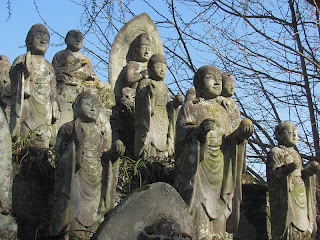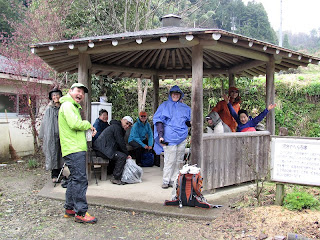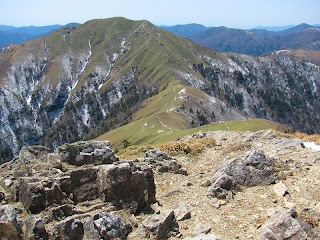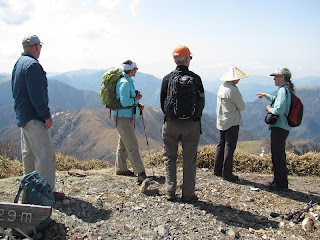Beautiful old tree in the temple compound at Nagaoji.
En route from Nagaoji to Ookuboji, we passed this stone monument along the pilgrimage route.
The pilgrimage route in the Kurusu Valley en route to Ookuboji.
Gentians blooming along the trail to Nyotai-san.
"This way to Ookuboji!" At stone marker (hyoseki) point the way up to the summit of Nyotai-san and Ookuboji (Temple 88).
The trail ascending to the summit of Nyotai-san.
Violets blooming on a sunny slope below Nyotai-san.
Almost there! The final pitch to the top of Nyotai-san. From there it will be virtually downhill all the way to Ookuboji.
Descending from the summit of Nyotai-san. You can see the henro shelter on the summit of the peak in the right background.
A well-maintained, stepped path descends to Ookuboji from Nyotai-san.
The hondo at Ookuboji. Temple 88! We made it!Statues at Ookuboji.





















































